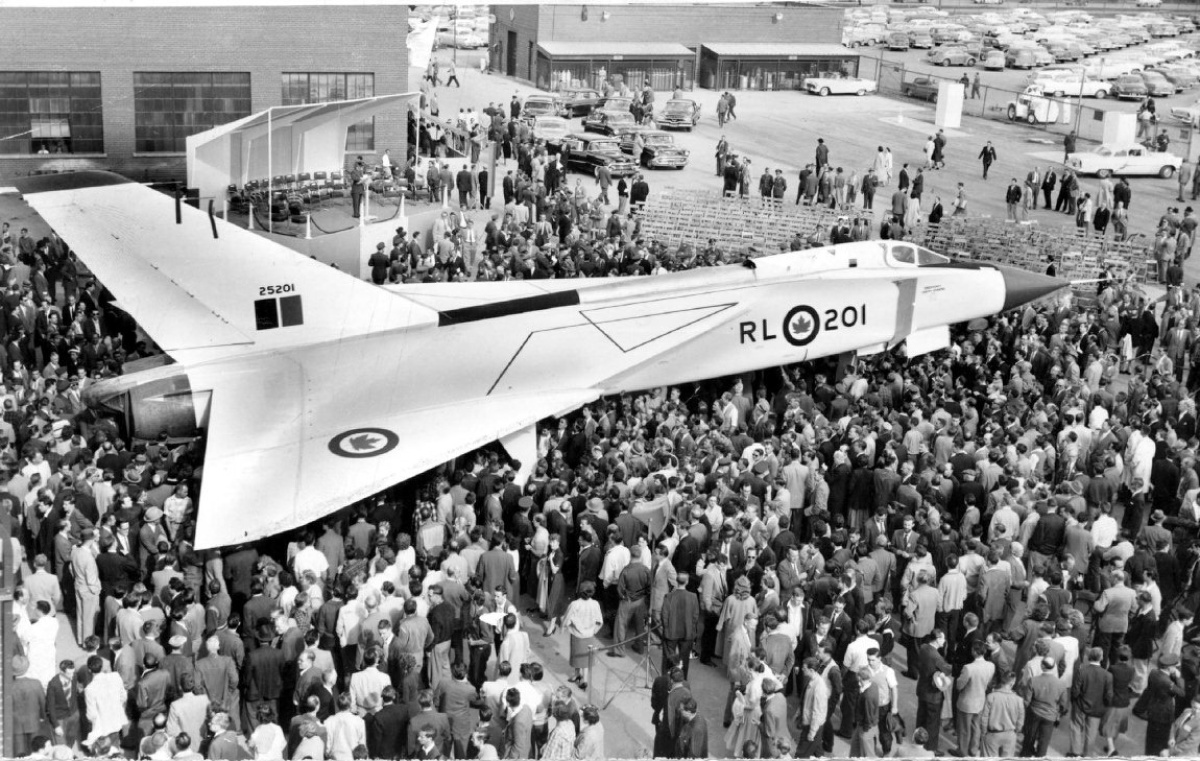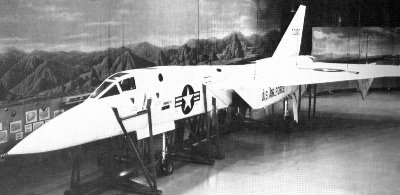
Posted on 08/06/2017 8:53:42 PM PDT by sukhoi-30mki

Scale Model Flight Test Prototypes Sunk in Lake May Provide Clues to Mystery. The Canadian-built CF-105 Avro Arrow is many things in aviation history, but more than anything else, it is an enigma.
Aviation historians suggest the Avro Arrow was an aircraft well ahead of its time. A Canadian project from the start, the CF-105 was a large, delta-wing supersonic interceptor built to repel the bomber threat from the Soviet Union.
During the 1950s at the height of the Cold War the Avro CF-105 Arrow project showcased many aviation firsts, including the first fly-by-wire flight control system and very impressive time-to-climb performance. By all measures, the CF-105 Avro Arrow program was a massive achievement for the Canadian aerospace industry, and a tangible competitor to other western aerospace contractors.
The story gets weird when then-Canadian Prime Minister John Diefenbaker cancelled the program abruptly in 1959. It gets even weirder when there appeared to be a conspirational effort to destroy every trace of the program; including all plans and the even the five test aircraft themselves. At the time espionage was suspected as a partial motive. More than one analyst has noted thematic design similarities between the early Avro Arrow and the later Russian MiG-25 Foxbat.

The Canadian-built Avro Arrow was an advanced high performance interceptor that remains shrouded in mystery. (Photo: Avro)
Another reason cited for the sudden cancellation of the Avro CF-105 was the development of ICBMs by the Soviets that effectively rendered interceptors obsolete.
Trying to find an accurate accounting of how, where and when the only five Avro Arrows were destroyed is difficult. The primary narrative is that they were, in fact, destroyed.
The mystery deepened again in December of 2011, when an ejection seat from an Avro Arrow surfaced on eBay with a starting bid of $250,000 USD. A previous seat surfaced in 2008 and was purchased for the Canadian Air and Space Museum in Toronto. The CF-105 was a two-seat aircraft with a pilot and radar intercept officer.
The discovery of the ejection seats fueled rumors that a single remaining Avro Arrow prototype had been smuggled out of Canada to England. One eyewitness claimed to have actually seen the aircraft over England, despite the fact that the Avro Arrow did not have the range to fly non-stop from Canada to England. Experts suggest the likelihood of an entire aircraft actually surviving the abrupt termination of the program are almost zero, but like other conspiracy theories the “hidden Avro Arrow” story has appeal, if not merit.
The Avro Arrow story regained momentum last week when Canadian mining tycoon John Burzynski announced a significant effort to recover the large-scale model prototypes used for flight testing over Lake Ontario, one of the Great Lakes between Canada and the United States.
The scale models launched from rockets off Point Petre in Prince Edward County east of Toronto during the 1950’s were intended to test stability of the aircraft early in the program. The Avro Arrow test models were three meters long (about 10 feet) or about 1/8th scale of the actual aircraft. A total of nine models were boosted by rockets and hurled into Lake Ontario as part of the early developmental testing.

Researchers are searching for test models launched over Lake Ontario at the end of large rocket boosters seen here. (Photo: Canadian Ministry of Defense)
The abandoned 10-foot long test models of the Avro Arrow likely lie in water between depths of 5 meters to nearly 100 meters, or 330 feet. Lake Ontario’s maximum depth is just over 240 meters, about 800 feet. The search grid for the large-scale models is over 60 square kilometers, half the size of the major Canadian city, Vancouver.
Researchers will use an autonomous programmable submarine surveillance vessel named the “Thunder Fish”. The small submarine uses high-resolution side-looking synthetic aperture sonar to make images of the lake bottom. During its submerged reconnaissance runs the mini-sub moves at about 3 knots speed.
Should the operation, called “Raise the Arrow” by its organizers, succeed in locating any of the aircraft models on the lake bottom for over 50 years they will be displayed at the Canadian Aviation and Space Museum in Ottawa and the National Air Force Museum of Canada in Trenton, Ontario.
Reminds me of the F-4 Phantom, too.
Thanks for that. The father of a friend of mine was scheduled to be an Arrow test pilot before it was scrapped. Would’ve been a cool gig.

Because.... Canada isn't in North America, right?
...and the F-106 Delta Dart!
What craft is that?

I think he’s referring to North American Aviation Company.
http://aircraft-in-focus.com/north-american-aviation/
OIC.
What? North American, short for North American Aviation, was an aircraft company. Among many other things, they notably made the P-51.
Plymouth Arrow:

Dodge Dart:

>>It gets even weirder when there appeared to be a conspirational effort to destroy every trace of the program; including all plans and the even the five test aircraft themselves.
I don’t think “conspirational” is even a real word?

How about constipationitorial?
North American Aviation. It was a company that made a plane or two in it’s time.

Yes, got it. Three times now. :)
North American F-108 (the mockup - cancelled 19589)
The F-102 program was on the drawing board in 1948. The AVRO arrow wasn't on the board until 1953.
The F-106 inherited all of it's design heritage, the single engine, delta wing case X and case XX and an the area rule fuselage from the F-102 start to finish.
Disclaimer: Opinions posted on Free Republic are those of the individual posters and do not necessarily represent the opinion of Free Republic or its management. All materials posted herein are protected by copyright law and the exemption for fair use of copyrighted works.